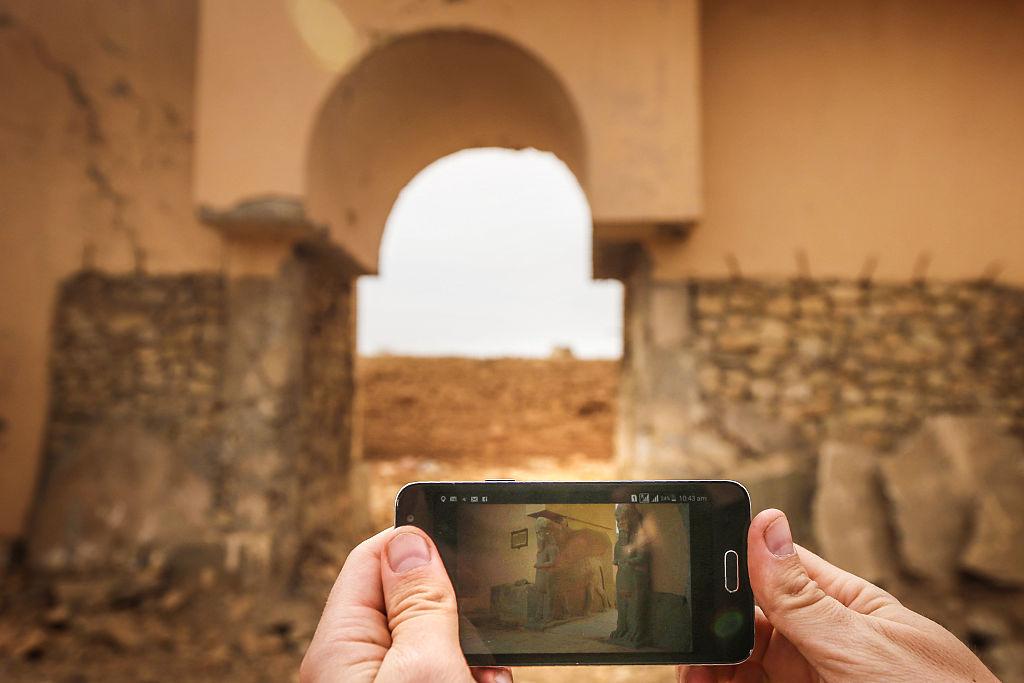Mosul: Isis destruction of ancient Iraqi city revealed for first time with new photos
Extensive damage done to ‘idolatrous’ Biblical-era treasures in city of Nimrud becomes apparent as Iraqi army drives militants back to stronghold

The true scale of damage inflicted on the ancient city of Nimrud by Isis has become clear, two days after the Iraqi army managed to secure the site.
Nimrud – an ancient Assyrian city dating back 3,300 years – is one of the most precious ancient Mesopotamian ruins in existence.
Sadly, pictures and video taken there on Tuesday show the overwhelming extent of the destruction.
Engraved friezes and statues of winged bulls and lions have been reduced to rubble, and the complex’s most striking feature – a stepped pyramid known as a ziggurat – has been bulldozed to a fraction of its former height.
“When you came here before, you could imagine the life as it used to be. Now there is nothing,” tribal militia commander Ali al-Bayati, visiting the site for the first time in two years told AFP.
“One hundred per cent has been destroyed,” he added. “Losing Nimrud is more painful to me than even losing my own house.”
Isis propaganda videos of militants smashing precious frescos and tombs of Assyrian kings with sledgehammers as well as dynamiting temples and other buildings in Nimrud in 2015 were condemned as an attack on “the world’s shared heritage” by Unesco, the UN’s cultural body.
In Isis’ twisted interpretation of Sunni Islam, all non-Muslim culture is heretical and should be destroyed.
The jihadis captured the area in the summer of 2014 – at the same time they took over Mosul, 20 miles to the north – when Isis managed to capture one third of Iraq and declared their caliphate.
Most of the militants were pushed out of the area over the weekend, Iraqi army officials said, but troops and local residents alike are wary of sniper fire and the possibility the ruins are rigged with improvised explosive devices, as was the case when Isis retreated from the Syrian city of Palmyra.
Unusually, Isis has not claimed the recent extra damage to Nimrud, but Michael Danti, the director of American Schools of Oriental Research Cultural Heritage Initiatives, said much of the militants’ activity since the US-backed Iraqi coalition effort to retake Mosul began last month has been erratic.
The Iraqi army is now painstakingly trying to secure the area. “We want to make sure we don’t inflict even the least damage to buildings in Nimrud already damaged by the evil [Isis],” a colonel in the 9th Armoured Division told Reuters.
Isis is still in control of the ancient city of Nineveh, in the centre of Mosul, and Khorsabad, another Assyrian site to the northeast, is close to the front line of the current conflict as US-backed troops attempt to push the miltants out of Iraq completely.
The Destruction of Nimrud
Show all 9“Liberation of ancient Iraqi archaeological sites from the control of the forces of dark and evil is a victory not only for Iraqis but for all humanity,” Iraq’s deputy culture minister Qais Hussein Rashid said on Monday after the army announced it had retaken Nimrud.
Locals whose families had protected and preserved the ruins for decades mourned its loss, however, as the evidence suggested there is not much left to celebrate.
Subscribe to Independent Premium to bookmark this article
Want to bookmark your favourite articles and stories to read or reference later? Start your Independent Premium subscription today.

Join our commenting forum
Join thought-provoking conversations, follow other Independent readers and see their replies